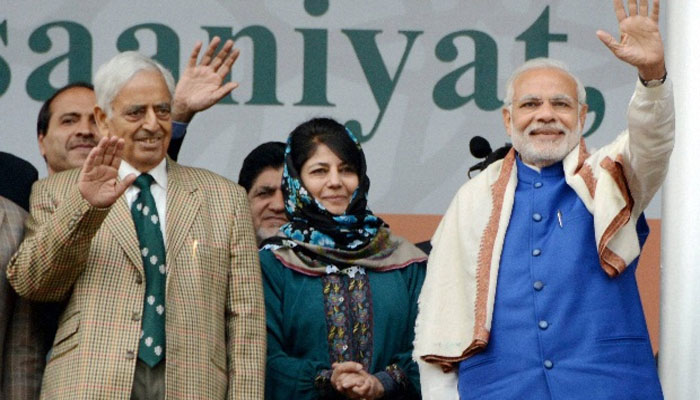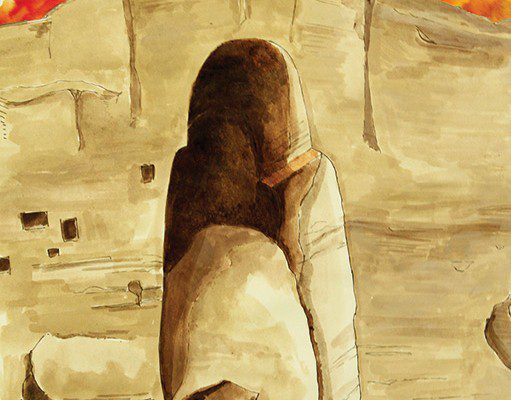Used liberally in dealing with revolting Kashmiris and the larger Kashmir conflict, words are the most potent weapons in the political toolkit of the Indian leadership and media.
Kashmir is lexically rich. It is the silicon valley of phrase-innovations. You can publish a separate Oxford Kashmir Dictionary, which will have unique words generated in and about Kashmir. Here I present few samples for you:
Pelleted: 1 adj. (sth/sb) – Having been hit by tiny metallic pieces shot from a pump action gun: “Their pelleted bodies were brought to the hospital for treatment.” 2 adv. (figurative) used to emphasise an ironical or oxymoronic situation: “There are two types of democracy: liberal democracy and restricted democracy. In Kashmir, it is a pelleted democracy”.
Nocturnal raid: noun – A surprise visit by police or army during night time to arrest protestors or/and harass/torture civilians (and sometimes commit burglary and theft): “Holding guns, knives and iron-rods, soldiers beat 100 people to pulp in terrifying nocturnal raid in South Kashmir’s Khrew area.”
Protest calendar: noun (political) – A protest programme usually scheduled for a week: “the pro-freedom leaders on Wednesday issued their joint protest calendar for the coming week (August 26 to September 1) in which they have called for a people’s march to the Srinagar Eidgah on Friday.”
Chalo call: noun – A call for organised protest march towards a designated place: “The police had erected barricades and laid concertina wires on all major roads to thwart Lal Chowk Chalo programme.”
Rudali: noun (disapproving) – In Indian culture, rudali is a woman who is professional weeper at bereaved homes. In Kashmir it is a reference to Mehbooba Mufti, the chief minister of Jammu and Kashmir, for her alleged duplicitous behaviour: “Geelani said that the J&K Chief Minister has been assigned the job of rudali by her masters in Delhi.”
When you talk about the Oxford Kashmir Dictionary you cannot ignore the rich idiomatic expressions and turn of phrases that it boasts of. Here I present a few samples for you:
Jamhooriyat, Insaaniyat and Kashmiriyat (democracy, humanity and kashmiriness): A vague expression used to placate a revolting population: “Indian home minister said Kashmir issue will be resolved within the ambit of jamhooriyat, insaaniyat and kashmiriyat but so far we have only seen haiwaniyat, barbariyat, and jabriyat.”
Ekta and Mamta: an expression espousing the ideals of unity and affection: “During 2016 uprising, Kashmiris displayed great example of ekta and mamta, while the Indian state embraced ekta and threw mamta to winds.”
An epidemic of dead eyes: an alarming situation when too many people are blinded in large scale state violence: “An epidemic of dead eyes in Kashmir as India uses pellet guns on protestors.”
Mufti syed’s vision, an ill-defined political concept or agenda of People’s Democratic Party (PDP): “Most of the political commentators, however, acknowledge that nobody knows for sure what Mufti Syed’s vision thing is all about; probably it means rendering Kashmiri youth visionless.”
Violence/path of violence: a sly political expression which implies both a generalised description of a political agitation/uprising and a reference to stone throwing protests: 1 “Violence in Kashmir has brought normal life to a grinding halt.” 2 “Dialogue only with those who shun the path of violence, said Mehbooba Mufti.”
***
Currently, words operate like bullets, teargas shells, and pellet fires in Kashmir. Used liberally in dealing with revolting Kashmiris and the larger Kashmir conflict, words are the most potent weapons in the political toolkit of the Indian leadership and media. In fact, Kashmir has now become a playground of semantics, phrases, wordplay, rhetoric, gibberish, and Mufti-esque hogwash.But, there are different ways of doing deeds with words. For example, Modi may like to speak through his measured silence, but when he is forced to speak a word on Kashmir, it cannot be any other word but “Pakistan” that needs to be used in the same paragraph where Kashmir is used, and with that one word half of the problem is sorted out for confused Indian nationalists.
The words ‘Kashmir’ and ‘Pakistan’ are, in fact, the main ingredients of Indian nationalism. As David Akram puts it, succinctly: “If you remove the terms ‘Kashmir’ & ‘Pakistan’ from an Indian’s brain, his patriotism will starve to death.”
When it comes to words, Rajnath Singh aka Raju is a wizard of sorts. He performs political sorcery with his words. Take his new found mantra of “Jamhooriyat, Insaaniyat aur Kaasmiriyat.” He never fails in tiring people with these three vague terms. But so far the only clearly understood term, most often used by him, is “Mehbooba Ji”.
That means we have four major operative words here in a deadly combo that concisely summarise home minister Rajnath Singh’s policy for Kashmir: Jamhooriyat, Insaaniyat, Kaasmiriyat and Mehbooba Ji. These four words are so powerful that when last time he uttered them together, around 200 Kashmiris got injured in a day.
So, I am of the firm belief that Raju is a wily necromancer. He does something occult with his words and his characteristic right hand gestures — jerking his hand to make a pointed index finer and a raised thumb; perhaps former for protesting Kashmiris and latter for Mehbooba Ji. Just concentrate him saying “Kaasmeer ke awaam…” and you will feel something necromantic in the air.
The other day Raju also said something different: “We don’t love only Kashmir but also Kashmiris.” I have heard and seen Raju speak many times on Kashmir from the floor of the Indian Parliament, and since it is no secret that Raju belongs to the largest peace-spreading organisation called Sangh Parivar, I have no reason to doubt that his professed love for Kashmiris is as deep as that of Shere Khan for little Mowgli.
Yet, there is another reason, which makes me believe Raju’s words. His “We-also-love-Kashmiris” love expresses itself in many different ways: in the last 50 days alone, 1.3 million pieces of love have been showered on Kashmiris; paramilitary and STF men shower it from their civilised mouths and eyes; this love is as silent as nocturnal raids and as loud as the curfewed roads; it is intense as Arnab’s ceaseless shouts and fragile as glass windows; it appears purple as a bruised skin and red as a blood-bath; it is a complete love, blinding and maiming love; and it sees no distinction in gender, in age, in place; it is a love which prevails everywhere: in the besieged city, in the curfewed streets of town, in vast swathes of hinterland nights. This special kind of love cannot be described so easily, but there are some exceptional people who have come close to describe it. For example, Raj Sabha member Swapan Dasgupta, who said on the floor of Indian parliament on 10 August 2016: “…to actually maintain the integrity of India [ekta] we have to do certain harsh things. But harshness is only to facilitate a process of greater love [mamta].”
***
The ardent new Modi disciples Sajad Gani Lone and Mehbooba Mufti seem to have perfected word-sorcery in the middle of the current uprising in Kashmir; they have added mathematical precision to it. According to their (seeped-in-inebriated-logic) theory: “we” should focus on 95% Kashmiris, because 95% of them are peace loving and only 5% are agitating; 95% want peaceful resolution but 5% does not; and also, 95 % injured in protests belong to below poverty line population and the agitating 5% does not get injured because they send their children to colleges and universities outside Kashmir.Now the question is, if 95% of those injured are below poverty line, and “we” should rightly empathise with their suffering, then where do they belong: 95% (non-agitators) or 5% (agitators)? And if 5% does not get injured, as Sajad-Mehbooba theory propounds, then, theoretically, they are not agitating. Who is than agitating and getting injured? 95% or 5%? What a mind-f*&%king question!!!
The Sajad-Mehbooba theory is creating further confusions.
Now everyone in Kashmir is asking the same thing: “For God’s sake, to which category do I belong to?”
But there are no easy answers, because some commentators believe that 95% of times Mehbooba-Sajad duo shoots off at their mouths.
***
The other day, a friend asked a general question on his Facebook post: name one positive outcome of the current uprising? Most of the people replied “unity among people”. But I think they have not checked the current air quality index in Kashmir.
Imagine 50 days of no traffic on roads, no factories operating. Can G-20 get cleaner air than this in the whole world? Protesting Kashmir, it turns out, is a greener Kashmir!



